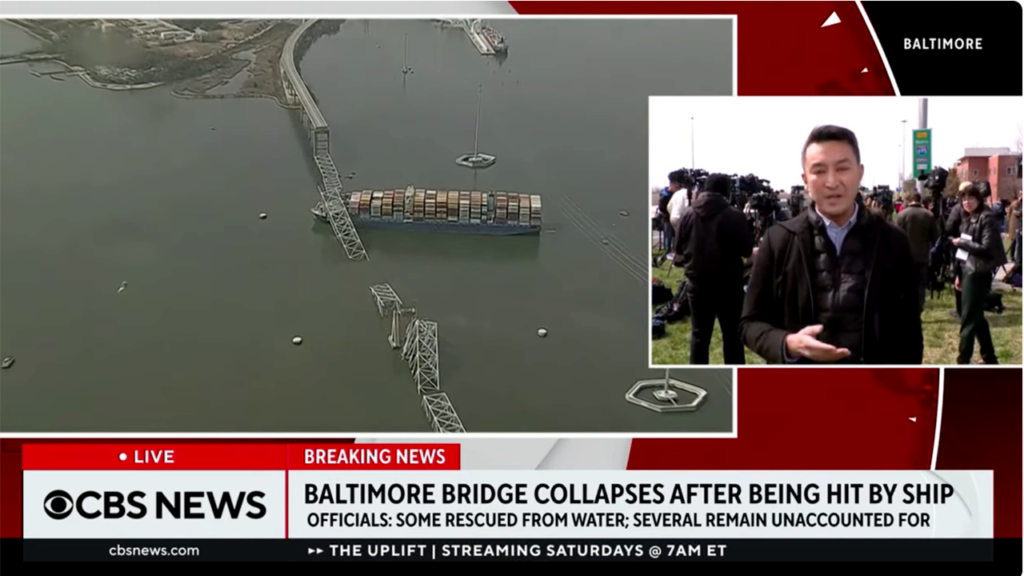
Bridge Collapse Shuts Down Port of Baltimore (UPDATED 3/27)
Written by William C. Vantuono, Editor-in-Chief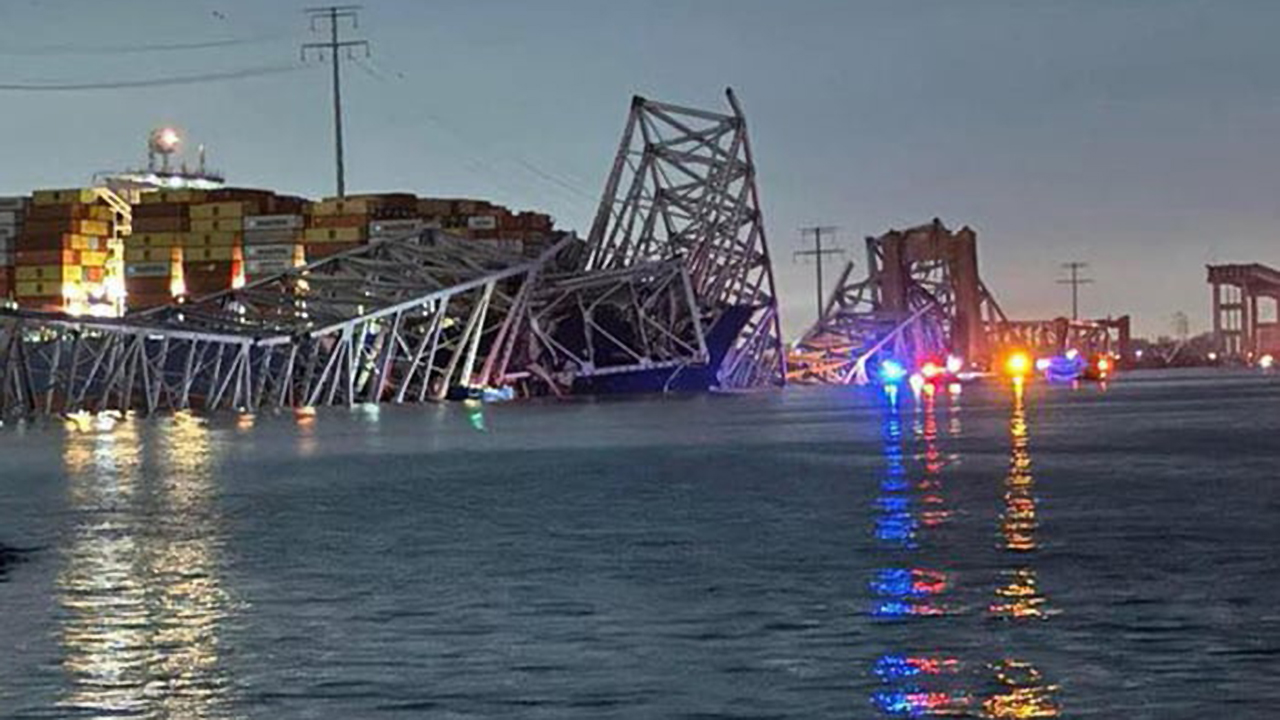
The Francis Scott Key Bridge collapsed after a containership ran into it in Baltimore, Md., on March 26. (Photo Credit: Harford County Md Fire & EMS/Facebook)
The tragic early morning collapse of the I-695 Francis Scott Key Bridge, which spans the Patapsco River, following a bridge strike by a container ship weighing 95,000 gross tons, has brought the Port of Baltimore, an important trade hub, to a halt. The Port of Baltimore has suspended all vessel traffic into and out of the port until further notice. The accident is a blow to the port operations of both CSX and Norfolk Southern, particularly for intermodal, import automotive and export coal traffic, though perhaps not as serious as originally thought.
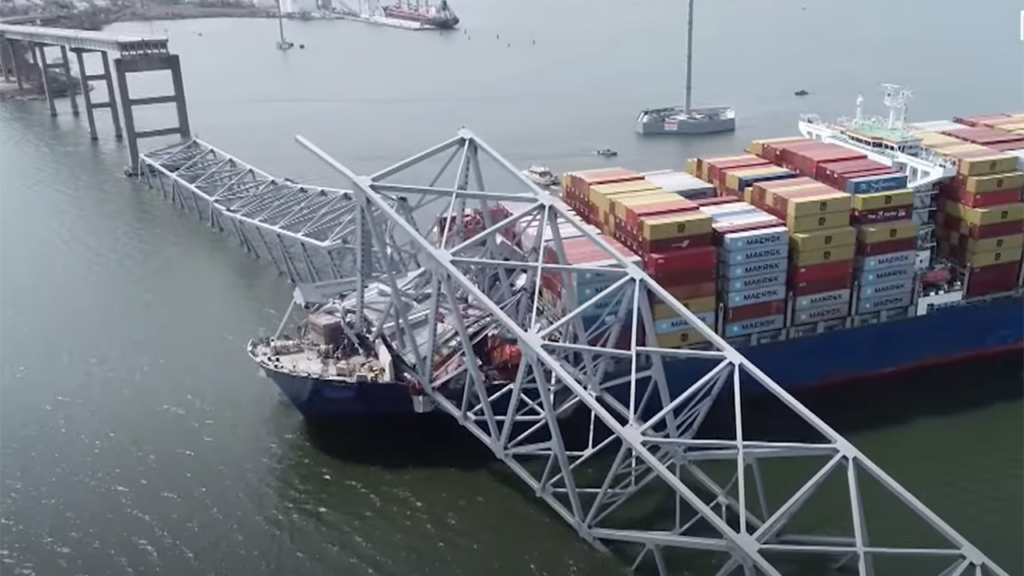
The accident occurred at approximately 1:30 AM on March 26 when the Dali, a 10,000-TEU, 948-foot Singapore-flagged containership owned by Grace Ocean, chartered by Maersk and managed by Synergy Marine, crashed into a main pier of the 1.6-mile bridge after departing from the Port of Baltimore. The vessel was outbound to Colombo, Sri Lanka. Video released on YouTube appears to show the vessel briefly losing power before crashing into the bridge and causing it to collapse. Synergy Marine said all 22 crew members and the two harbor pilots on board had been accounted for with no reports of injuries. This accident has been classified by the U.S. Coast Guard as a major marine casualty. The National Transportation Safety Board (NTSB) is leading the investigation, and the Office of Marine Safety will investigate and establish the probable cause.
The Dali’s crew told Baltimore Harbor Control that the vessel had lost power and propulsion just before the ship struck the bridge. A mayday call from the ship enabled officials to stop traffic at both ends of the 1977-built structure and try to evacuate people from the span before it collapsed. Eight people fell into the water during the collapse; all were part of a construction crew filling in potholes. Two were pulled from the water, one with critical injuries. The remaining six are missing; a search and recovery is now under way, as they have been presumed dead.

Effects on Rail Freight
“CSX customers should anticipate potential shipment delays following the tragic collapse of the Francis Scott Key Bridge along I-695 in Maryland today,” CSX said in a statement. “While freight traffic has not been entirely halted in the region, certain commodities have been affected by the incident. CSX is actively communicating with customers to provide updates on their shipment statuses as the situation evolves.
“CSX currently has capacity to dispatch additional trains to CSX-served coal terminals in Baltimore before reaching pile space limits. Contingency plans are being implemented and CSX is in contact with existing coal customers through these terminals. The company currently intends to keep its Curtis Bay Coal Pier facility operational but will continue to assess the circumstances to determine appropriate actions moving forward.
“In light of the bridge collapse impacting vessel access to the port, all international intermodal shipments destined for Baltimore have been temporarily suspended. In-gated traffic originating from other locations and destined for Baltimore is on hold until further notice. The CSX team is working with International customers to identify alternative solutions to support cargo movement to and from Baltimore. It’s important to note that domestic intermodal traffic on CSX destined for local Baltimore remains unaffected. CSX is committed to keeping customers informed and will continue to provide updates as information becomes available.”
“Our hearts go out to the individuals and families impacted by the tragic events surrounding the Francis Scott Key Bridge collapse,” said CSX President and CEO Joe Hinrichs. “The State of Maryland and the City of Baltimore have been central to our operations for nearly two centuries, and we remain deeply connected to this dynamic region. We stand in solidarity with the community during this difficult time.”
“We are working directly with affected international customers, port partners and state officials to help maintain the integrity of the global supply chain,” Norfolk Southern told Railway Age. “Ports on the East Coast are resilient and have the capacity to serve the flow of freight. Our network touches every major port on the eastern seaboard, and we have proactively reached out to help our customers and provide alternate routing solutions. Significant supply chain events demand a rapid response approach, frequent communication and innovative solutions, and Norfolk Southern is doing all three of these things to help our customers and partners navigate through this challenge.”
Scott Group of Wolfe Research issued the following analysis:
“Export Coal Impact: The Port of Baltimore moves more than a quarter of the total export coal from the U.S. and is the second-busiest export coal port after Hampton Roads, Va. Export coal moves out of Baltimore through two facilities: Curtis Bay Terminal owned by CSX and the CNX Marine Terminal owned by CONSOL and serviced by both CSX and NS.
“Eastern Rail Exposure: We estimate that export coal out of Baltimore represents around 30%-40% of export coal volumes for CSX and NS and less than 2% of total volumes for both CSX and NS, with slightly more exposure for NS. And given the higher RPU for export coal volumes, we estimate closer to 4% revenue exposure for both eastern rails. But we expect some coal will be diverted to other ports in the near term (e.g. Hampton Roads), while the remaining volumes will eventually be made up when operations resume at Baltimore.
“Other Commodity Impact: While Baltimore is the second-largest export coal port, it’s the 15th largest container port in North America and the seventh-largest on the East Coast—just 6% of L.A./Long Beach, for example. So, the impact on intermodal volumes should be relatively modest, and again, traffic can be diverted to other ports. Meanwhile, Baltimore is the largest port handling auto imports in the U.S., but NS noted to us that auto volumes can move to other facilities such as the nearby Sparrows Point Terminal, which is on the open-water side of the bridge. So, outside of coal, we don’t expect a material impact on volumes for CSX or NS. We also don’t expect a material impact on overall freight rates, truck or ocean.”
The Port of Baltimore handled a record amount of foreign cargo last year, and was the 20th biggest port in the nation overall in 2023, ranked by total tons, according to the Bureau of Transportation Statistics. It ranks first in the U.S. for the volume of automobiles and light trucks it handles and for vessels that carry wheeled cargo, including farm and construction machinery. About 40 ships, including 34 cargo vessels, currently have Baltimore listed as their destination, according to MarineTraffic, which tracks ships around the world. Global shipping analyst Georgios Hatzimanolis said he “expects there to be a ripple effect, but it’s a bit too early to say what the impact will be.”
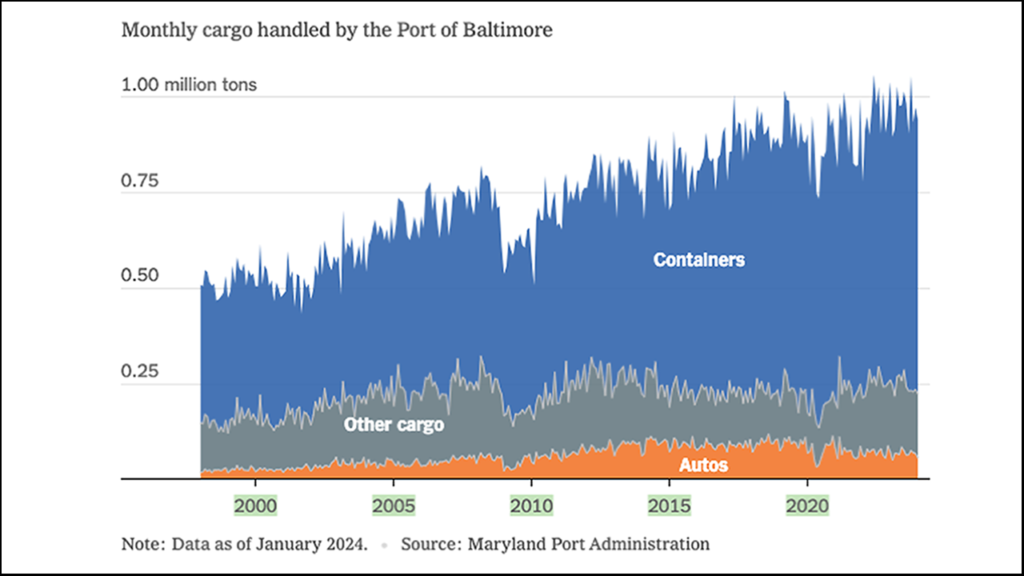
State-owned terminals managed by the Maryland Port Administration and privately owned terminals in Baltimore transported a record 52.3 million tons of foreign cargo in 2023, worth $80 billion. The port handled nearly 850,000 cars and light trucks last year, more than in any other U.S. port for the past 13 years. Other materials transported in large volumes through the port include coal, coffee and sugar. It was the ninth-busiest port in the nation last year for receiving foreign cargo, in terms of volume and value.
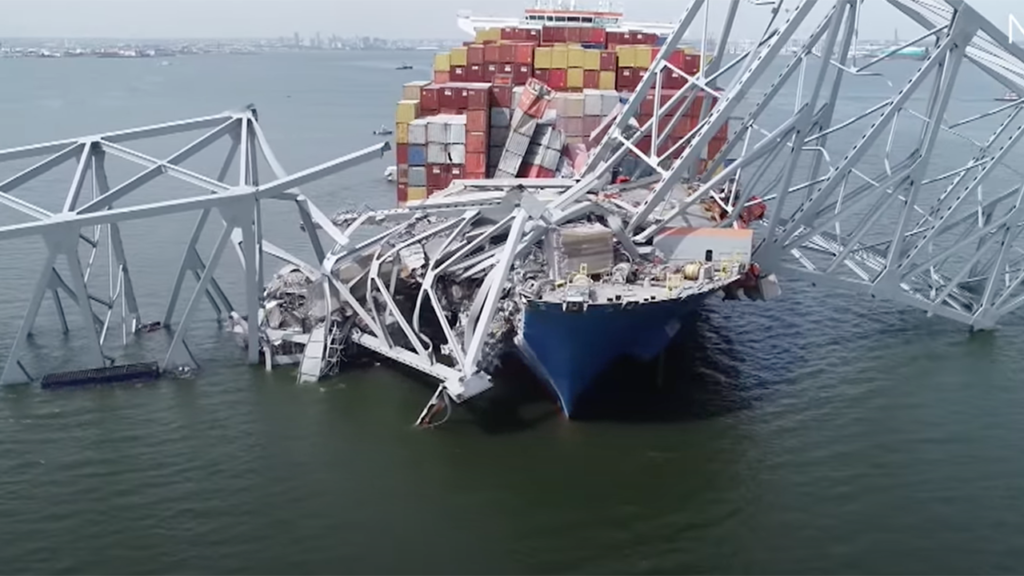
President Biden, in a White House press briefing, said the federal government would “pay for the entire cost of reconstructing” the collapsed Francis Scott Key Bridge, adding that he hoped it would be rebuilt and reopened “as soon as humanly possible.” Maryland Governor Wes Moore declined comment on when port operations might return to normal, saying that the “exclusive focus is on saving lives, search and rescue.”
